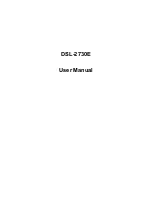
d15 Modem Integration and Application Developers Guide version draft 0.53 Page 180 of 181
19. RF Network Issues
Each RF network has its own requirements for the subscriber device. Most networks implement a coverage
equalization scheme. This consists of configuring the infrastructure sites such that their RF power output is
equal to that of the subscriber device.
Since most portable devices are battery operated, the transmitter power of the portable units is relatively
low. To compensate for this, the base site transmitter power is decreased to a level equal to that of the
portable. The base site has a much larger and
reliable power source, and is capable of putting out more power. This helps overcome desense problems that
the portable unit incurs. Most network managers prefer not to increase their site power because of ERP
licence limitations and cell overlap issues.
Network operators must consider ambient noise levels when designing their coverage plans. Once the
wireless modem and host unit are engineered not to self-desense, a host of other machines in the user’s
environment can still impact radio performance. These machines are not usually within close proximity of
the wireless modem antenna and have less effect. An FCC Class B radiator can impact the wireless device if
it is within 30 meters of the device, assuming that an emission exists at the channel frequency of the radio.
Networks can assist in the desense problem by offering more than one channel frequency at which to
operate. If the radio encounters interference on a channel, it can then roam to another.
WAN protocols include retry mechanisms that resend messages not acknowledged from the subscriber
device. These protocols can correct problems from intermittent noise sources by retrying during a time slot
that does not coincide with noise source interference.
At a certain point, desensitizing a wireless modem receiver creates unacceptable coverage in the network.
This usually is in the 10 dB range, though it can vary with networks.
20. Antenna
The Motorola d15 wireless modem is not equipped with an on-board antenna. You must provide one within
the host device.
20.1 Field Strengths from the Antenna
Field strengths from the wireless modem transmitter can reach as high as 100 V/M for WAN
products. Harden the host device to withstand these levels. LCD displays and switching power
supplies are particularly susceptible to RF. Capacitive decoupling of sensitive areas is required.
Decouple the reference voltage points on power supplies, reset lines on processors, and keyboard
scanning circuitry.


































